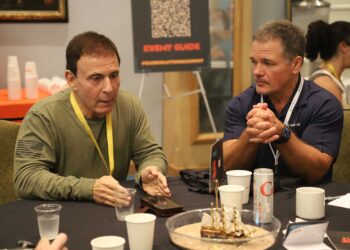Now in its 30th year, the Cincinnati Sports Club, a one-location locally and privately-owned, multi-purpose hybrid club, continues to grow and adapt to members’ changing needs. The club specializes in combining the best of a health club, social club and medical wellness facility to fulfill the whole person.
In May 2020, the club plans to open its new Adult Only Outdoor Pool Resort for members ages 21 and older, which will feature a new outdoor pool, hot/cool tub and poolside bar/café. This will be the seventh and eighth aquatic facility at the Cincinnati Sports Club. The expanding 16-acre campus already features a main outdoor pool, two indoor salt-water pools, indoor hot tub, outdoor zero-entry baby pool and splash pad.
What has it taken to reach this 30-year milestone? At its core, the health club business has three major components: members, facility and staff. If you can master those three areas, you will be successful.
Members: Listen for the Whispers
Know your members and your market. There are many ways to do this. For the Cincinnati Sports Club it is with surveys, comment cards, focus groups, a member advisory board, and voice of the company. Once that information is obtained it can be measured, while at the same time continually observing the members.
After all that information is gathered, listen for the whispers. About 15 years ago, a member who had moved back to Cincinnati mentioned the challenges they were having with meeting new people. That one whisper began the club’s weekly Friday Happy Hour program, which now averages 500 people in the summer and 350 people in the winter at a combined total of 28 weekly Friday Happy Hours each year. The weekly themed happy hour features live music, entertainment for various ages, lite bites and drink specials.
But more importantly, the weekly happy hour provides opportunities for members to make connections outside of their workouts in a comfortable, social setting.

Facilities: Know What You Are Not Good At
The club realized many years ago the health club industry did not address facility maintenance in the same professional way that other areas of the business were addressed. Facility maintenance would not be a key core competency for the club. For that reason, facility management is now outsourced. The club chose a company that specializes in facility management, has staff available to cover vacation and sick time, and stays on top of the latest trends in HVAC, lighting, electrical, etc. Since then the club has outsourced housekeeping, lifeguarding, construction management and payroll. The club resources are now freed up to focus on what they are good at and can continually strive to be great at.
Staff: Cash is No Longer King, Talent Is
The recruitment, development and compensation of staff are a focus of the company. A full-time recruiter markets the club to prospective employees via social media, universities, trade schools, non-profits, churches and community groups.
In addition, the club has developed an expanding 16-course training curriculum for staff ranging in topics from creativity to healthy conflict. Courses are led by managers, and all members of the team are invited to attend, including the interns.
About 10 years ago, an incentive plan was developed consisting of three wage levels for the front line staff. It was important to offer a compensation plan for customer service professionals so they could earn an honest living doing what they truly enjoy, while building loyalty and reducing turnover. The staff earn points and receive rewards for good customer service, and the top wage band level pays $15-$19 per hour. Approximately 20% of Cincinnati Sports Club’s front line staff is at the top wage level.
Ultimately, these three strategies have been instrumental in the club reaching 30 years in business. The Cincinnati Sports Club will commemorate the 30th anniversary with events planned all year long for members, future members, employees and community neighbors.










